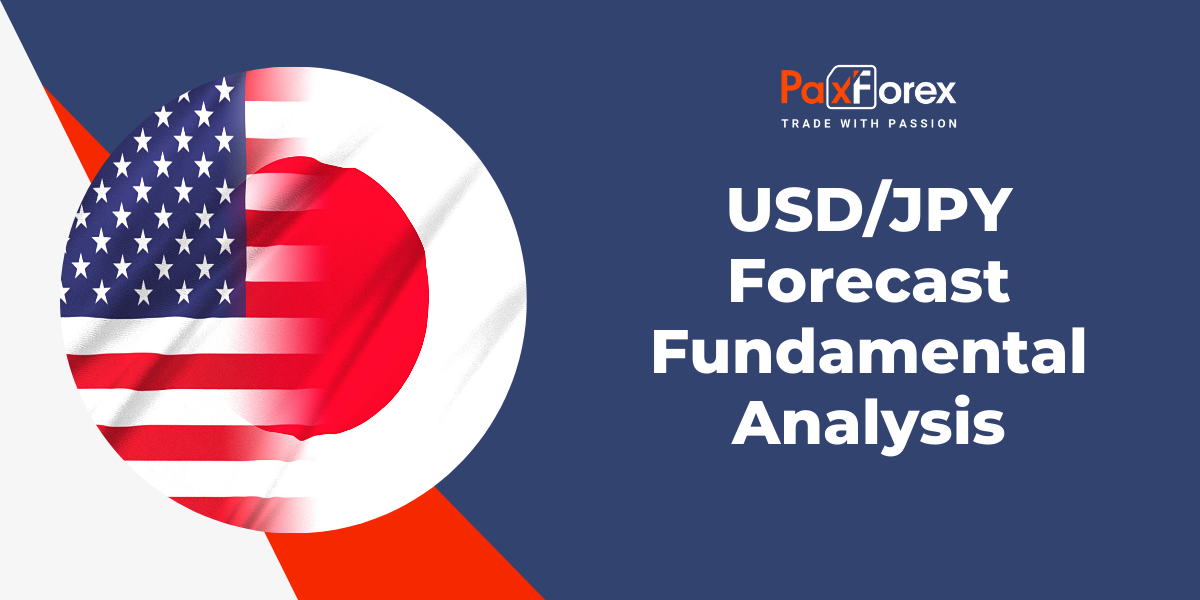
Source: PaxForex Premium Analytics Portal, Fundamental Insight
The Preliminary Japanese Current Account Balance for February came in at ¥1.648T, and the Preliminary Japanese Adjusted Current Account Balance at ¥0.520T. Forex traders can compare this to the Japanese Current Account Balance for January, reported at -¥1.196T, and the Japanese Adjusted Current Account Balance reported at ¥0.180T.
Japanese Consumer Confidence for March came in at 32.8. Forex traders can compare this to Japanese Consumer Confidence for February, reported at 35.3.
US Preliminary Wholesale Inventories for February are predicted to increase 2.1% monthly. Forex traders can compare this to US Wholesale Inventories for January, which rose 0.8% monthly.
The interest rate differential between the US Dollar and the Japanese Yen, which drove the USD/JPY to multi-year highs, continues to widen. A weaker currency benefits exporters, boosting the export-oriented Japanese economy, but it depresses domestic consumers. The latest Japanese consumer confidence data confirms the negative trend. Despite a reprieve, the Bank of Japan started to grow uneasy about the depreciation of its currency, orchestrated by its monetary policy of maintaining bond yields at 0.25%.
Eisuke Sakakibara, the former Japanese Vice Minister of Finance for International Affairs, stated that the Bank of Japan would panic if the USD/JPY crossed above 130. Numerous current lawmakers claim the benefits of a weaker Japanese Yen outweigh the negatives, while financial markets have begun questioning the safe-haven status of the Japanese Yen. Trading volumes are likely to soar as the interest rate differential makes it an attractive carry trade, mirroring the period before the 2008 global financial crisis.
The forecast for the USD/JPY turned moderately bearish following a massive rally. While the Kijun-sen flatlined, suggesting the lack of short-term bullishness, the Tenkan-sen began moving lower. A bearish crossover may follow, adding downside pressure on price action. The Ichimoku Kinko Hyo Cloud shows initial signs of a flattening trend, with the Senkou Span A and the Senkou Span B trending sideways. Traders should monitor the CCI after a negative divergence formed in extreme overbought territory. A breakdown below 100 can trigger a sell-off in this currency pair. Will bears awaken and pressure the USD/JPY into its horizontal support area? Subscribe to the PaxForex Daily Fundamental Analysis and earn over 5,000 pips per month.
Should price action for the USDJPY remain inside the or breakdown below the 123.450 to 125.100 zone, PaxForex recommends the following trade set-up:
- Timeframe: D1
- Recommendation: Short Position
- Entry Level: Short Position @ 123.950
- Take Profit Zone: 119.850 – 120.700
- Stop Loss Level: 125.850
Should price action for the USDJPY breakout above 125.100, PaxForex recommends the following trade set-up:
- Timeframe: D1
- Recommendation: Long Position
- Entry Level: Long Position @ 125.850
- Take Profit Zone: 126.800 – 127.450
- Stop Loss Level: 125.100
Open your PaxForex Trading Account now and add this currency pair to your forex portfolio.













